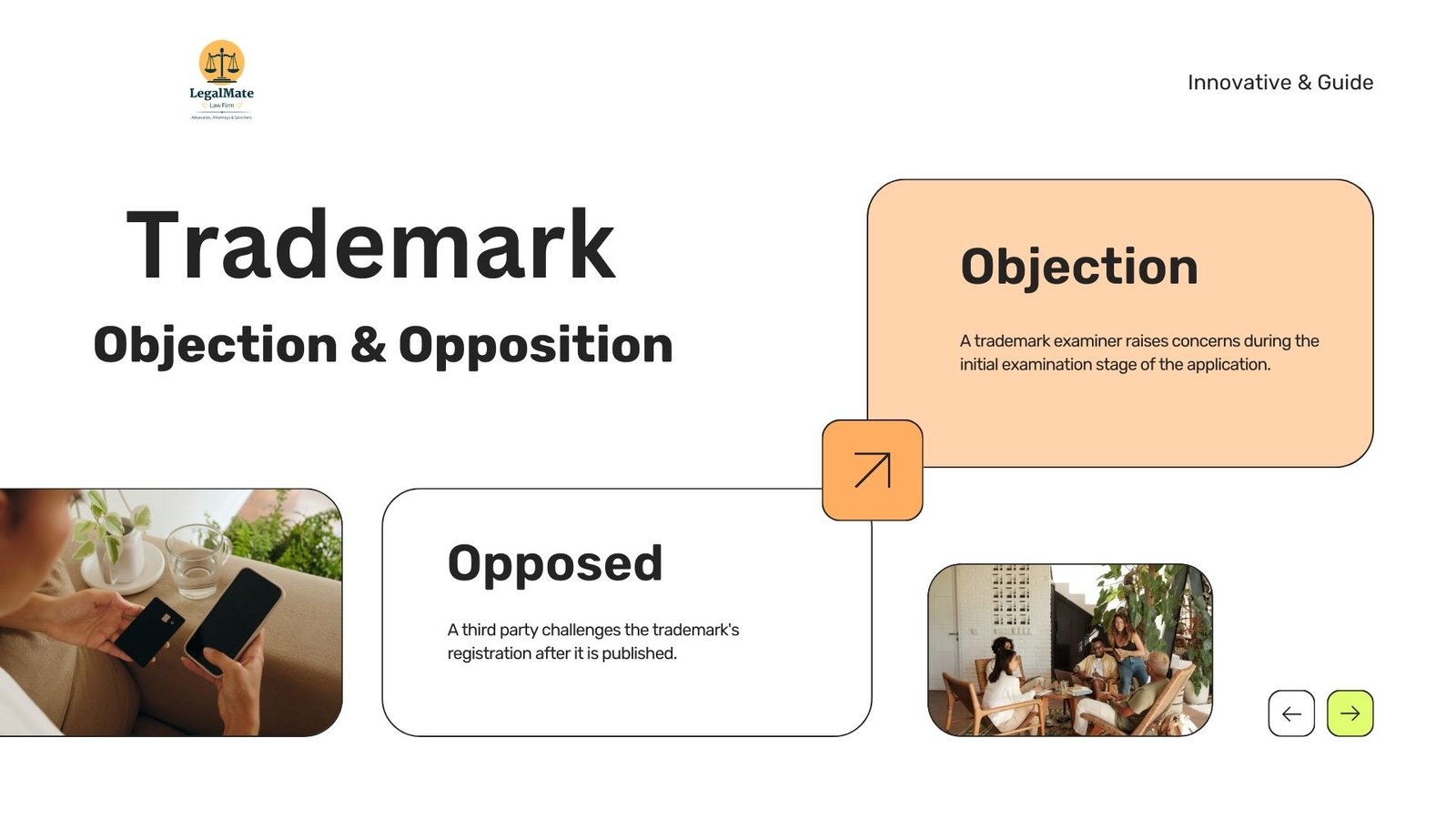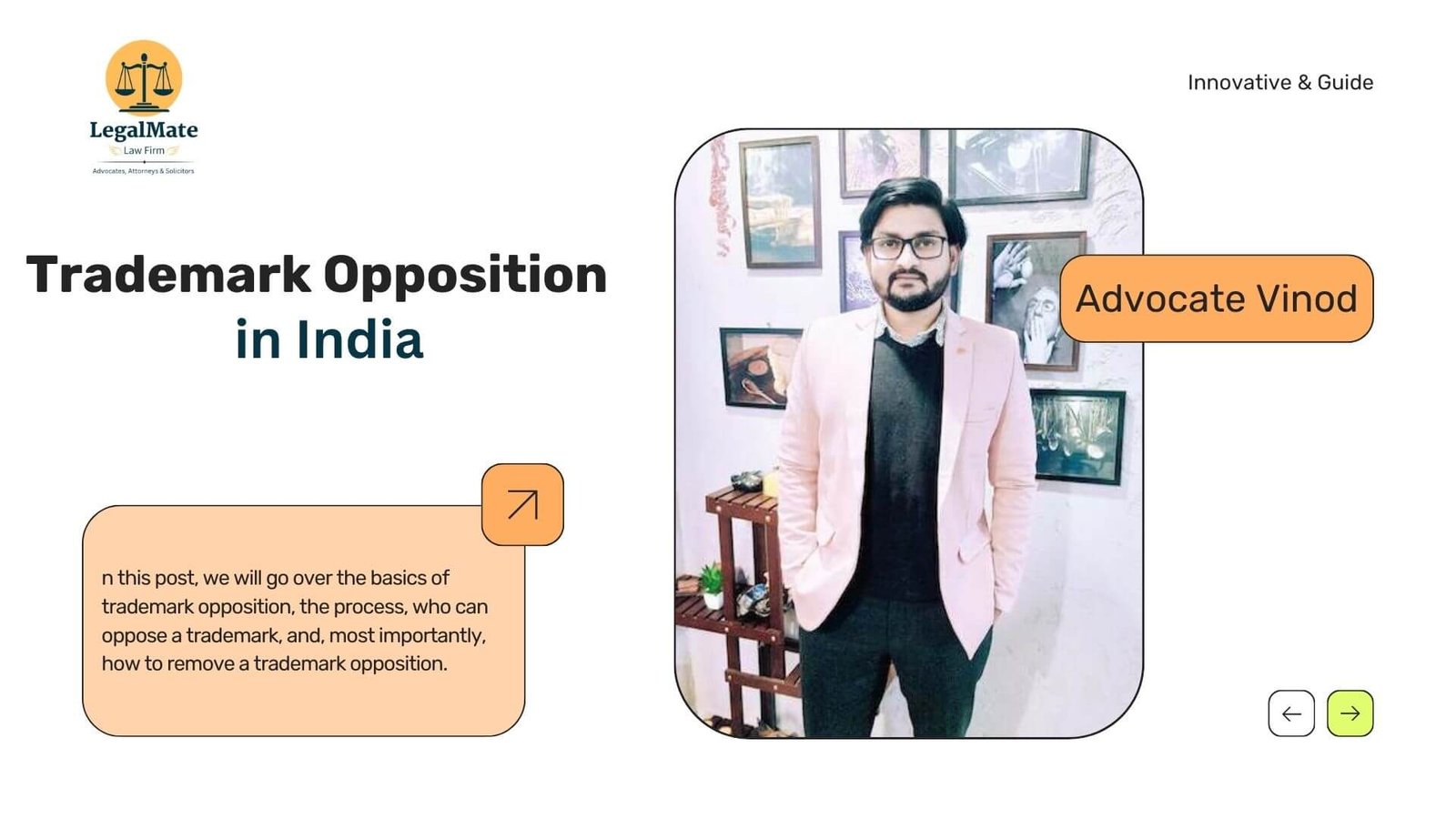Trademark opposition is a critical step in the registration process of brand name. Delays, additional costs, and, in some cases, the denial of your trademark registration can arise from opposition to your application. n India, where intellectual property (IP) rights are growing in popularity, trademark opposition occurs frequently, so TM applicants must prepare for it. But what really is a trademark opposition? Why is trademark protection Important, and how can you successfully deal with and get clear of trademark opposition?
In this post, we will go over the basics of trademark opposition, the process, who can oppose a trademark, and, most importantly, how to remove a trademark opposition. We’ll also go over the costs, point out pertinent provisions of the Indian Trademark Act, and stress the importance of a trademark lawyer in handling oppositions.
What is Trademark Opposition?
- Purpose: Trademark opposition exists to protect the rights of existing trademark holders and prevent consumer confusion. It acts as a safeguard against potential conflicts in the market.
- Difference Between Objection and Opposition: The trademark examiner raises TM objections during the initial examination stage, while a third party initiates opposition after the mark is published.

Why Trademark Opposition is Filed?
- Similarity to an Existing Trademark: A trademark that is too similar to an existing mark can confuse consumers.
- Generic or Descriptive Terms: Marks that are too generic or merely descriptive of goods or services are often opposed.
- Deceptive or Misleading Marks: Trademarks that may mislead consumers about the nature, quality, or origin of goods are prone to opposition.
- Bad Faith Filings: If the mark is filed in bad faith—for example, to benefit from another brand’s reputation—an opposition may be filed to prevent its registration.
Who Can Oppose a Trademark?
- Existing Trademark Owners: Businesses or individuals with similar trademarks in the same industry.
- Competitors: Companies offering similar products or services that could be affected by the new trademark.
- Interested Parties: Any entity with a concern over the potential impact of the trademark on their brand.
By allowing these parties to oppose, the trademark system ensures that only distinctive and non-conflicting trademarks register.

The Process of Trademark Opposition in India
Understanding the opposition process is crucial for any business planning to file a trademark application in India. Here’s a breakdown of the stages involved in trademark opposition:
- Publication of Trademark: After filing a trademark application, the Indian Trademark Office reviews it. Once the trademark application is accepted, the office publishes it in the Trademark Journal. This is a public notice that allows any interested party to review and oppose the trademark within a set timeframe.
- Notice of Opposition: If someone objects, they can file a Notice of Opposition (Form TM-O) within four months of the publication date.
- Counter-Statement: The trademark applicant must file a counter-statement within two months of receiving the opposition notice, explaining why the opposition should not stand.
- Evidence Stage: Both parties submit evidence to support their claims, including documents, affidavits, and other proofs.
- Hearing: If necessary, the parties arrange a hearing to present their arguments, typically before a Trademark Registrar.
- Decision: The registrar reviews the arguments and evidence from both parties and decides whether to accept or reject the opposition.
If the opposition is upheld, the trademark office may reject the applicant’s trademark application. If dismissed, the trademark proceeds to registration.
How to File a Trademark Opposition in India?
Filing a trademark opposition is a detailed process that requires attention to various factors:
- Submit the Notice of Opposition: Fill out Form TM-O and file it with the Indian Trademark Office within the four-month period after the trademark’s publication in the journal. Make sure the grounds of opposition are specific and well-documented.
- Outline Grounds of Opposition: Common grounds include prior use of a similar mark, likelihood of public confusion, or that the mark is generic or descriptive.
- Submit Evidence and Documents: Ensure that all documents, affidavits, and evidence supporting the opposition claim are ready for submission in the evidence stage.
Working with a trademark lawyer can streamline this process, as they understand the complexities of IP law and the specific requirements for filing an opposition effectively.
How to Remove Trademark Opposition in India?
Successfully removing a trademark opposition involves a strategic approach, guided by a thorough understanding of the law and clear evidence supporting your claim to the mark. Here’s a step-by-step guide:
- File a Counter-Statement: As soon as you receive a notice of opposition, respond by filing a counter-statement. You must submit this within two months of receiving the notice. The counter-statement should address each point raised by the opposition.
- Gather Evidence of Use: Compile documentation proving your use of the trademark in question. This could include advertisements, invoices, customer testimonials, and other materials that show your established presence in the market.
- Prepare for the Evidence Stage: After filing the counter-statement, you will enter the evidence stage. Work closely with your trademark attorney to gather supporting documents and evidence that strengthen your case.
- Submit Affidavits: Affidavits signed by key stakeholders in your business can be strong evidence to back your claim.
- Attend the Hearing: If the case moves to a hearing, present your case persuasively with all necessary documents. The role of an experienced trademark lawyer is crucial at this stage, as they can anticipate counter-arguments and effectively represent your interests.
- Follow Up with the Trademark Office: Sometimes, due to the backlog of cases, trademark hearings and decisions can take time. Regularly check for updates and ensure all follow-up paperwork is in order.
Trademark Opposition Cost in India
Trademark opposition costs in India involve government fees and potential legal fees. Here’s a breakdown:
- Filing a Notice of Opposition (Form TM-O): ₹2,700 (e-filing) or ₹3,000 (physical filing) per class.
- Responding with a Counter-Statement: No separate government fee for filing the counter-statement.
- Legal Representation Fees: These vary based on the complexity of the case and the experience of the attorney.
Additionally, both parties may incur costs for preparing affidavits, collecting evidence, and attending hearings.
Important Sections of the Trademark Act Related to Opposition
Several sections of the Indian Trademark Act, 1999 govern the opposition process, including:
- Section 21: Governs the filing of opposition and counter-statements.
- Section 11: Details absolute grounds for refusal of registration, which can form a basis for opposition.
- Section 9: Covers relative grounds for refusal, including misleading or confusing trademarks.
Understanding these sections and how they apply to your case is essential for building a strong argument against or in defense of an opposition.
Why You Need a Trademark Attorney for Opposition Cases
Trademark opposition cases can be complex, and handling them without expert guidance may lead to delays or even rejection of the application. A trademark attorney:
- Knows the legal procedures and formalities required.
- Can analyze the strengths and weaknesses of an opposition.
- Helps in drafting the counter-statement and gathering relevant evidence.
- Offers representation in hearings, presenting the case professionally and persuasively.
Investing in a skilled trademark attorney can save time, reduce errors, and increase your chances of a successful outcome.
Tips for Avoiding Trademark Opposition in India
Here are some tips for avoiding trademark opposition in India:
- Conduct TM Searches: Before filing your trademark application, do a comprehensive search to identify any similar trademarks. This can help you avoid potential conflicts down the line.
- Use a Unique Trademark: Choose a distinctive mark that stands out. Generic or descriptive trademarks are more likely to attract opposition.
- Consult a Trademark Lawyer: It’s wise to work with a trademark attorney who can guide you through the registration process and help identify potential risks.
- File Your TM Application Promptly: Don’t delay in filing your trademark application. The sooner you file, the less likely someone else will register a similar mark.
- Monitor Newly Registered Trademarks: Keep an eye on recently registered trademarks to catch any potential conflicts early and address them proactively.
- Respond to Office Actions Quickly: If the trademark office raises any objections, make sure to respond promptly and thoroughly to resolve the issues.
- Prepare for Potential Opposition: Anticipate that competitors may oppose your trademark and have a plan in place to defend it if necessary.
- Consider Coexistence Agreements: If you find similar trademarks, think about negotiating coexistence agreements with their owners to reduce the risk of opposition.
By following these strategies, you can lower the chances of facing trademark opposition and improve your odds of securing trademark rights in India.
Frequently Asked Questions (FAQs)
1. Can I file a trademark opposition online?
Yes, you can file a trademark opposition online through the official Indian Trademark Office portal by submitting Form TM-O.
2. What happens if I don’t respond to a trademark opposition?
If you don’t respond to a trademark opposition within the stipulated time, the trademark office will likely deem your application abandoned.
3. How long does the trademark opposition process take?
It varies, but the process can take several months to a few years, depending on the complexity of the case and the backlog of the Trademark Office.
4. Can I appeal if the opposition is upheld?
Yes, you can appeal the decision in the Intellectual Property Appellate Board (IPAB).
5. What are common grounds for filing an opposition?
Common grounds include likelihood of confusion with an existing mark, prior use, generic nature of the mark, and misrepresentation.
Conclusion
While navigating the trademark opposition process can be challenging, understanding the steps and procedures involved will ultimately help you respond effectively and protect your brand’s identity. From filing a counter-statement to presenting evidence and attending hearings, each stage requires strategic planning and attention to detail. The support of a trademark attorneycan be invaluable, ensuring that your case is strong, compliant, and well-prepared to meet opposition head-on.
Removing a trademark opposition isn’t just about legal compliance; it’s about securing your brand’s future in a competitive market. By following the guidelines laid out in this article, you can not only enhance your chances of a favorable outcome but also move closer to securing your trademark rights in India.






